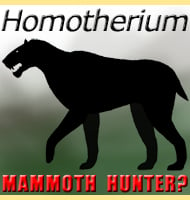In Depth
Though Moganopterus probably does not have the largest skull of any pterosaur, it does have the largest skull of any toothed pterosaur. This size is down to the jaws being very elongated, possibly for additional reach. There were at least sixty-two teeth in the skull, though possibly more. On the back of the head a low crest extended back at an angle of fifteen degrees. Because of the blade-like nature of the jaws, Moganopterus was named after the legendary couple of Gan Jian and Mo Ye a couple who were tasked with forging two swords for King Hel� of Wu. The story varies slightly depending upon the telling of the story. In some accounts the furnace forging the metal for the swords needed more qi energy, so Gan Jiang and Mo Ye cut off their hair and fingernails and threw them into the fire but in other accounts Mo Ye sacrificed herself by throwing herself into the fire. Two swords were made, but Gan Jiang decided to keep one while giving the Mo Ye sword to the king. When the king learned that Gan Jiang had kept one, he had Gan Jiang killed, though failed in retrieving the sword.
Before he was killed, Gan Jiang had told Mo Ye of the location of the sword. Mo Ye passed this information onto their son Chi, who when old enough located the Gan Jiang sword and set off avenge his father’s death. The king, fearing Chi, placed a bounty upon Chi’s head. On his way to see the king, Chi began crying as he thought about his mother and father, revealing his presence to an assassin who was searching for him. Rather than be taken as a prisoner, Chi committed suicide, but not before telling his story and reason for wanting the king dead to the assassin.
Upon hearing Chi’s story, the assassin realised the truth of what the king had done for the sake of owning the Gan Jiang sword. Taking Chi’s head and the Gan Jiang sword, the assassin presented both to the king, showing him that the danger was gone. The assassin however told the king that Chi’s head should be boiled to remove the flesh, something that the king agreed to. The assassin placed Chi’s head into a cauldron of boiling water, but then the assassin turned to the king in dismay, saying that the flesh was not coming away. The assassin suggested that the king should look upon Chi’s head himself so that the flesh would fall away. As the king peered over the edge of the cauldron, the assassin drew his sword and decapitated the king, his head falling into the cauldron of boiling water with Chi’s. The assassin then lent over the cauldron and chopped off his own head so that there were now three in the cauldron.
By the time the palace guards were able to recover the cauldron, the flesh had been boiled off all three heads so that only three skulls remained. No one in the palace was able to recognise which skull belonged to the king, and so all three skulls were buried together in Henan Province in a place called the Tomb of Three Kings.
Further Reading
- Largest Toothed Pterosaur Skull from the Early Cretaceous Yixian Formation of Western Liaoning, China, with Comments On the Family Boreopteridae - Acta Geologica Sinica 86 (2): 287–293. - L� Junchang, Pu Hanyong, Xu Li, Wu Yanhua & Wei Xuefang - 2012.










